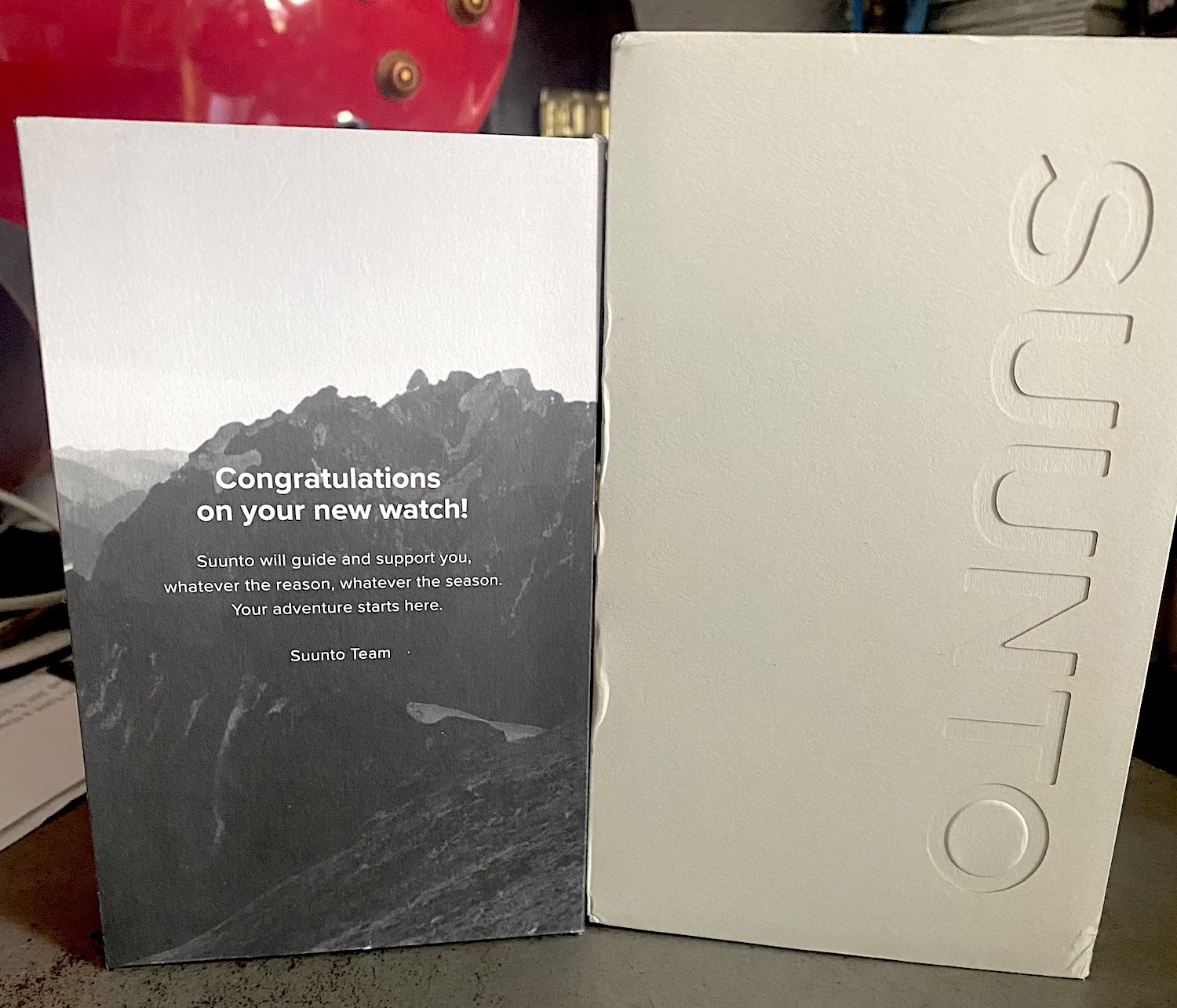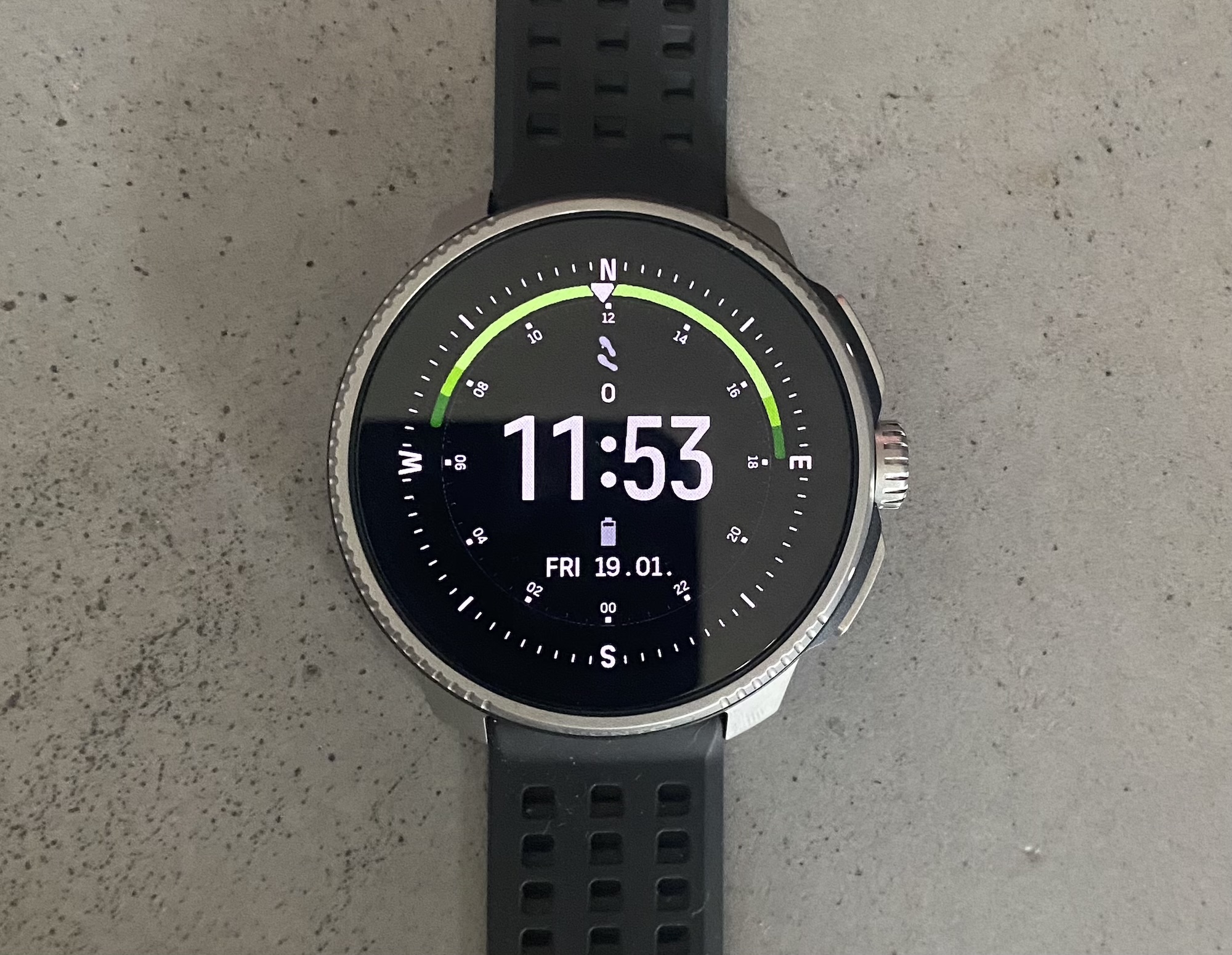Suunto Race Watch – Test & Review
"Its battery life is fantastic on my runs..."
I’ve been testing the Suunto Race watch for over two months during Winter including many runs in my local area (both urban and countryside), several pre-ultramarathon training sessions, as well as a few obligatory hill running adventures. Everything I can think of to put the Race watch through its paces.
Firstly, getting the watch out of the box is a really nice experience! It absolutely screams premium product. Setting up the Suunto Race was easy and straightforward, you simply download the Suunto app and pair the watch….simples.

It’s Suunto’s first watch to introduce a Digital Crown within the button layout. This allows you to navigate up/down through the menu, settings and zoom in/out on maps. The physical vibration feedback (haptics) as you use the crown is a really nice subtle feature and very similar to an Apple Watch. This is in addition to the two other buttons above/below it, and the touchscreen itself. I’ve used both the Baro 9 and the Peak 9, personally I found this to be the best of the 3.
It has an 1,000 nit AMOLED (active-matrix organic light-emitting diode) screen which is very easy to see, both on bright sunny Winter days and in darker, colder conditions. The screen will increase in brightness when you turn your wrist, and while there is a slight time lag, I found it fine when I was out running. There are two modes: Always-on, or Gesture-based. Always-on means the screen is always-on, but will dim when you put your wrist down. Whereas Gesture-based means that the screen turns off entirely when you put your wrist down. Suunto states that in gesture-based mode you will get about 12 days of battery life, versus always-on at about 7 days of battery life. Both of these claims seem about right to me based on wearing it 24 hours a day 7 days a week.
Overall, the watch screen looks great and displays the maps perfectly (despite the screen being smaller than the vast majority of the watches I’ve used. I found that the touchscreen worked really well (although I tend to opt for using the crown in the menus), especially when using the maps.

The watch face shows various training stats along the bottom including HRV (Heart Rate Variability), TSB (Training Stress Balance), CTL (Chronic Training Load) and steps. You can now track your HRV values while you sleep and it shows you the average…you’ll find that it takes 14 nights of sleep data to populate.
Other widgets include the stopwatch, notifications, heart rate, resources, sleep, sunrise/sunset, and many more. It was easy to find training load and recovery statistics within the watch, as well as on the app platform. You can add structured workouts in the app and then sync to the watch and these were easy to follow once outside with a beep/vibration to indicate your next set.

I found the device great to use while out on training runs. The display is easy to read, the mapping good and the range of sport options and data field customisation is very good. Perhaps there could be more training plans to choose from – this is available in the SuuntoPlus. After each session it gave me a training summary with total statistics, time spent in each training zone and recovery time. You can get even more insights from the Suunto Coach which will make comments on your progress and suggest areas that might need improving.
The Race watch comes with a 22mm standard band attachment and you can easily swap it for another Suunto Band.
Its battery life is spot-on. Suunto claims you a get up to 40 hours and even with the always-on display and navigation enabled it lived up to this. It also charges very quickly.
I think that this is a great watch by Suunto as it has brilliant all-around features. The AMOLED display works amazing, it lights up whenever I need it to so the bright screen is always easy to read. Its battery life is fantastic on my runs. Plus the GPS accuracy even up in the hills is very good and again, the maps are crystal clear to view.
It’s a superb option for ultra runners and the pricing is just right.
Suunto Race Watch
All Black
£389.00









